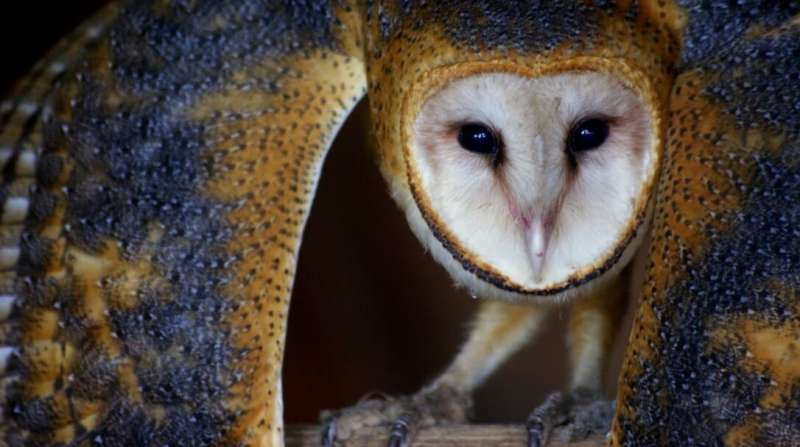March 28, 2023 report
This article has been reviewed according to Science X's editorial process and policies. Editors have highlighted the following attributes while ensuring the content's credibility:
fact-checked
peer-reviewed publication
trusted source
proofread
Sulfur may be partly responsible for reddish feathers in barn owls on remote islands

A small team of environmental scientists from several institutions in Italy and Switzerland has found evidence suggesting that at least some of the red plumage sported by barn owls on small, isolated islands may be due to the ingestion of sulfur. In their study, reported in the Journal of Biogeography, the group studied the preserved skin of thousands of barn owl specimens from multiple geographic locations archived in museum collections.
Barn owls are medium-sized owls with long wings, short tails and flat, heart-shaped faces. Their size differs by location as does their coloring. In this new effort, the researchers noticed that barn owls living on large, less remote islands tended to have lighter coloring that barn owls living on continents. They also noticed that barn owls living on smaller, more remote islands had darker, sometimes reddish coloring. They wondered if the darker coloring might be related to the large amounts of sulfur commonly found on small, remote islands.
Prior research has shown that pheomelanin in many vertebrates is the result of sulfur compounds—it can lead to reddish-colored soft tissues. To find out if that might be the reason behind feather coloring in owls, the research team borrowed barn owl specimens from a variety of museums and studied their skin pigment. They scored the reddishness of the barn owl feathers based on degree and compared them across locations.

They found some associations—owls living on volcanic islands had darker and redder feathers. Unfortunately, it was only partially due to ingesting sulfur—the team was only able to explain 10% of the color variation of the material. They were also not able to explain why the owls on the remote islands are so dark. They suggest it is likely a genetic adaptation to help the owls hide in the thick vegetation typically found on such islands. They also note that the darkness may be the result of the birds' bodies attempting to shunt toxic amounts of sulfur to safer parts of its body.
More information: Andrea Romano et al, Island volcanism predicts pheomelanin‐based plumage colouration in a cosmopolitan raptor, Journal of Biogeography (2023). DOI: 10.1111/jbi.14596
Journal information: Journal of Biogeography
© 2023 Science X Network





















